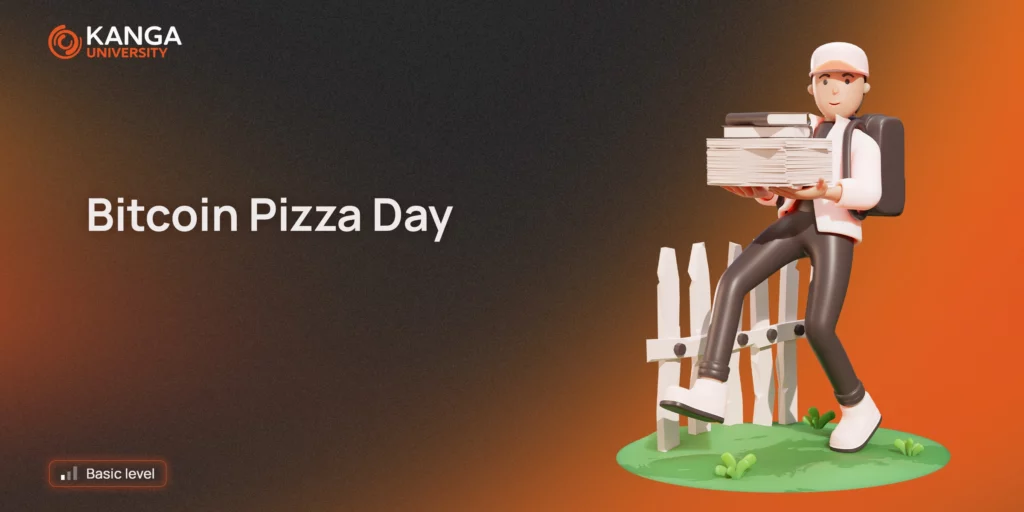

A story that has long been written in the history of Bitcoin. And it will probably stay with us for a long time.
You are well aware that Bitcoin is the first and now – the most valuable and popular cryptocurrency. However, this was not the case from the beginning. In its early days, many people did not believe that Bitcoin would become what it is today.
Now imagine spending around US$238 million on two large pizzas from Papa Johns. Yes, you read that right. No wonder it sounds very ridiculous. We will quote Laszlo Hanyecz’s story below.
The history of Bitcoin Pizza Day
On 22 May, every year, the cryptocurrency community celebrates Bitcoin Pizza Day. It is worth exploring the history behind the day from start to finish. However, it is important to recognize that one of the first BTC miners and a Florida-based programmer – Laszlo Hanyecz – has made a lasting mark on cryptocurrency history.
Before Bitcoin’s first halving, which took place in 2012, the reward for mining a block was as much as 50 BTC. Counting in our heads very quickly, we could have received as much as 10 000 BTC in reward for mining around 200 blocks at that time. Given that Bitcoin was in its early stages at the time, mining was somehow not competitive.
Laszlo Hanyecz, one of the first miners of the flagship cryptocurrency, therefore had a straightforward path to rake in a not inconsiderable pot of BTC from mining. So, in 2010, he decided that it would be a great idea to buy pizza with this cryptocurrency. Laszlo put out an offer on the Bitcointalk forum that he would buy pizza with the digital asset. In the posting, we could read that he would donate 10,000 BTC to anyone who orders, picks up and delivers two large Papa John’s pizzas for him. Four days after putting out his proposal, someone accepted Laszlo’s offer. And that’s how history was made, celebrated every year. It was the first time someone actually used Bitcoin as a medium of exchange in a financial transaction that involved real goods.
What’s so interesting about buying pizza with Bitcoin?
Bitcoin Pizza Day has a historical significance that is evident in the use of cryptocurrency to purchase real products. Laszlo, probably not entirely intentionally, pointed out an example of Bitcoin use. According to the man himself, the purchase of pizza with BTC showed the whole world that Bitcoin, as a cryptocurrency, is real. However, charging as much as 10,000 BTC for two large pizzas was a huge loss for Laszlo. After the transaction, he only had single pieces left in his wallet. Have you already calculated how much two pizzas cost at current Bitcoin prices?
Many, of course, believe that Laszlo made a stupid decision that irreversibly diminished his finances by several million. However, if you have a closer look, he actually pointed out the direction in which cryptocurrencies would go. Today, we use digital assets to pay for property and even coffee!
Laszlo Hanyecz
Laszlo is one of the earliest co-founders of Bitcoin. As the story reads, he was most likely the first developer to provide logic for Bitcoin and the Mac OS. Furthermore, he is the one who appears in the records as the first developer of this flagship cryptocurrency to create GPU mining code tailored to Bitcoin. Interestingly, it was probably Laszlo who tested the GPU mining code for mining cryptocurrencies with higher hash rates.
Our hero of today’s lesson never hesitated to spend his Bitcoin. He also never regretted spending 10,000 BTC on pizza. He was the first person to use a digital asset for an actual transaction, and the rest of the world followed suit.
Therefore, we cannot define Laszlo as a ‘pizza guy’. His purchase of pizza was an inspiration to the rest of the people. He was the one who proved that Bitcoin and digital assets can be used for something more. They can be a variation of electronic cash to purchase the products and services we want.
Summary
The story of this pizza will be with us for years to come. Laszlo’s action is a very early example of Bitcoin adoption. Plan your Bitcoin Pizza Day to make it as memorable as it was for Laszlo too!

